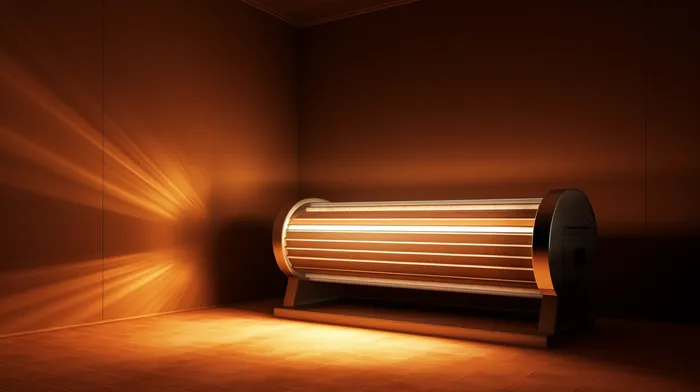Can you believe that over one million people a day are willingly paying for their risk of developing cancer to increase? It’s true! According to research at Dartmouth, frequent indoor tanning significantly raises your chances of skin cancer, with teenagers and young adults being particularly vulnerable. The culprits spiking this risk are radiation lamps and tanning booths, which emit ultraviolet (UV) light.
Before we analyze the impact of indoor tanning on skin cancer risk, let’s take a closer look at several types of skin cancer and their causes.
Types of Skin Cancer
Skin cancer is the most common type of cancer worldwide. It develops primarily on areas of sun-exposed skin, which vary depending on the individual. There are two main types of skin cancer: keratinocyte cancer (basal and squamous cell skin cancer) and melanoma.
Basal Cell Carcinoma (BCC)
Basal cell carcinoma (BCC) is the most common form of skin cancer. BCCs typically arise from normal basal cells located at the bottom layer of the epidermis (the outermost layer of the skin). BCCs are usually slow-growing and rarely spread to other areas of the body. They can, however, cause significant displacement and damage to nearby healthy skin tissue and bone by expanding. BCCs often look like an open sore, red patches, pink growths, or shiny bumps.
Squamous Cell Carcinoma (SCC)
The second most common form of skin cancer is Squamous Cell Carcinoma (SCC). SCCs develop from the flat, scale-like squamous cells that comprise most of the epidermis. These cancer cells are invasive and can spread to other parts of the body, although they are less likely to do so than melanoma. SCCs appear as a scaly, reddish patch, elevated growth with a central depression, open sore, or wart-like growth.
Melanoma
Melanoma is the deadliest type of skin cancer. It arises from melanocytes, the pigment-producing cells located in the basal layer of the epidermis. Melanoma can spread quickly and be fatal if not treated early. Melanomas often resemble moles and can develop from existing ones. Signs of melanoma include the well-known ABCDEs: Asymmetry, Border irregularity, Color variation from one area to another, Diameter larger than a pencil eraser, and Evolving (changing in shape, size, or color).
Indoor Tanning and Its Effects on Skin Cancer Risk
“Our findings suggest that teens and young adults who seek indoor tanning may be especially vulnerable to developing BCC (basal cell carcinomas), the most common form of skin cancer, at a young age”, says researcher Margaret Karagas, co-director of the Cancer Epidemiology and Chemopreventon Research Program at Dartmouth. The study found that using indoor tanning products can produce 10 to 15 times as much ultraviolet radiation as the midday sun.
This staggering statistic is cause for concern, especially for young people. Interestingly, a recent survey in New Hampshire (where the study was conducted) revealed that 74% of high schools have at least one tanning salon within two miles, and an additional 22% have easy access to a tanning salon. Therefore, it is critical to educate young people about the potential risks of indoor tanning and the staggering effects it can have on their skin health in the long term.
According to the Skin Cancer Foundation, individuals who use a tanning bed before the age of 35 have an astonishing 75% increased risk of melanoma. Besides skin cancer risk, other harmful effects of indoor tanning include premature skin aging, eye damage, allergies, and an increased risk of infectious skin diseases.
What You Can Do To Prevent Skin Cancer
It’s never too late to start taking action to prevent skin cancer. The following measures can significantly reduce your risk:
- Avoid Tanning Beds: Skip the tanning beds and opt for a sunless tanning lotion or spray if you must have a tan.
- Wear Sunscreen: Use a broad-spectrum sunscreen with at least SPF 30 and apply it liberally and evenly to all exposed skin. Reapply every two hours and after swimming or sweating.
- Seek Shade: Especially between 10 a.m. and 4 p.m., avoid direct sunlight when UV rays are the strongest.
- Cover Up: Wear protective clothing, such as long-sleeved shirts, pants, wide-brimmed hats, and sunglasses.
- Examine Your Skin: Regularly check your skin for any changes in the appearance of moles, freckles, or other marks. If you notice any changes, consult your doctor or dermatologist.
By taking these simple precautions, you can significantly reduce your risk of skin cancer, ensuring your skin stays healthy for years to come. No tan is worth the potentially life-threatening consequences of prolonged UV exposure.



